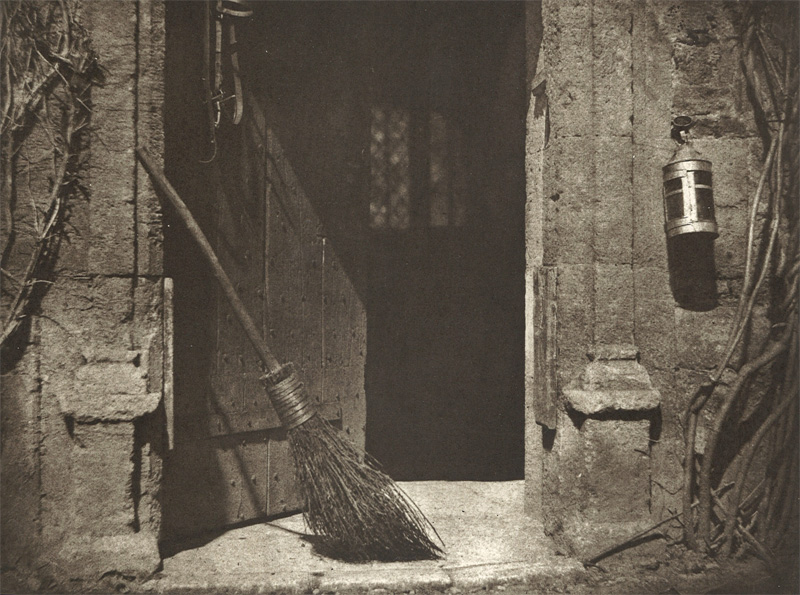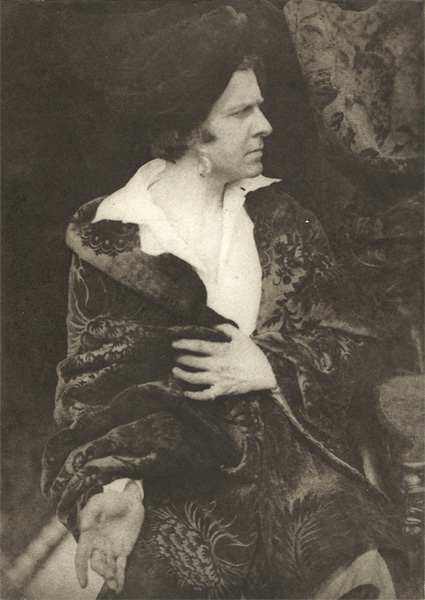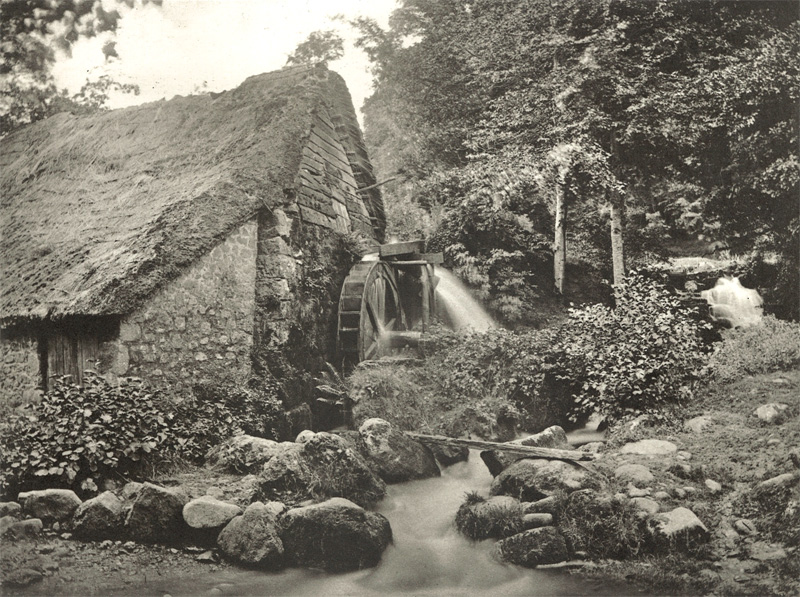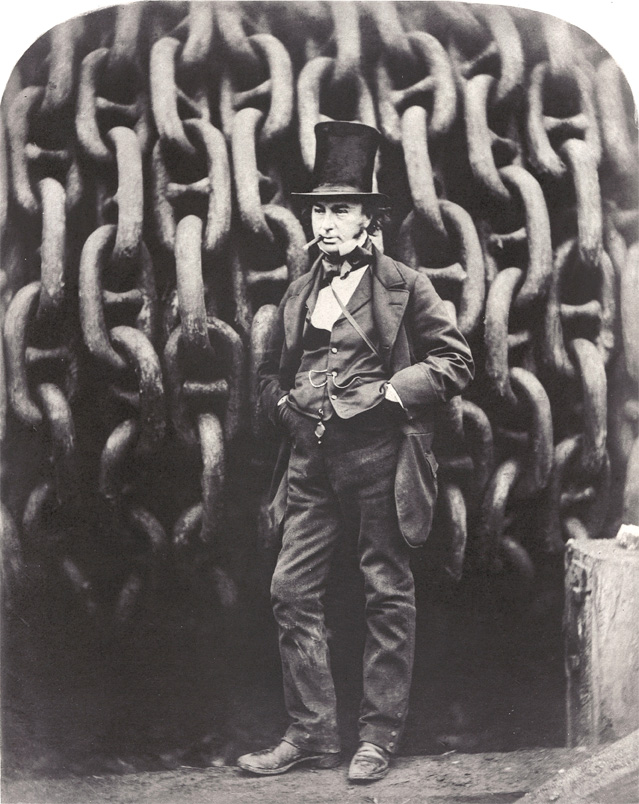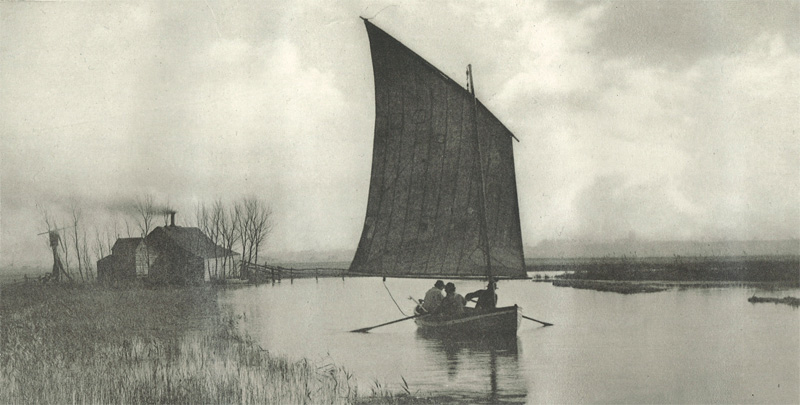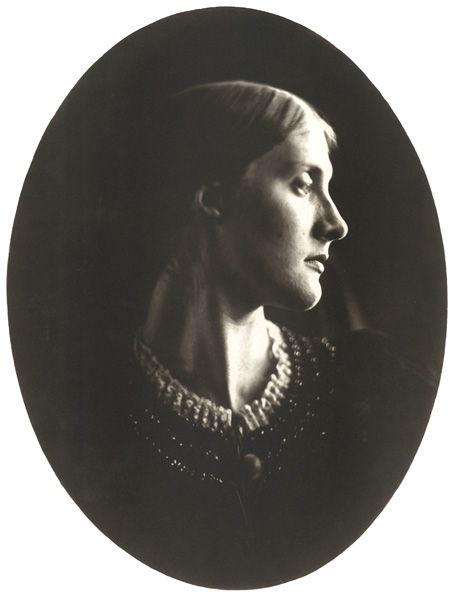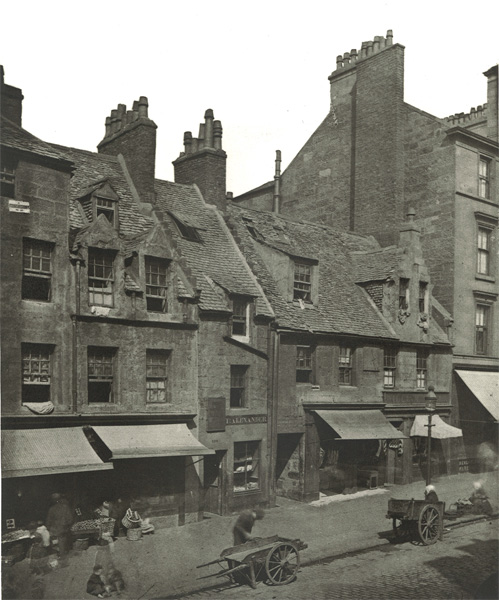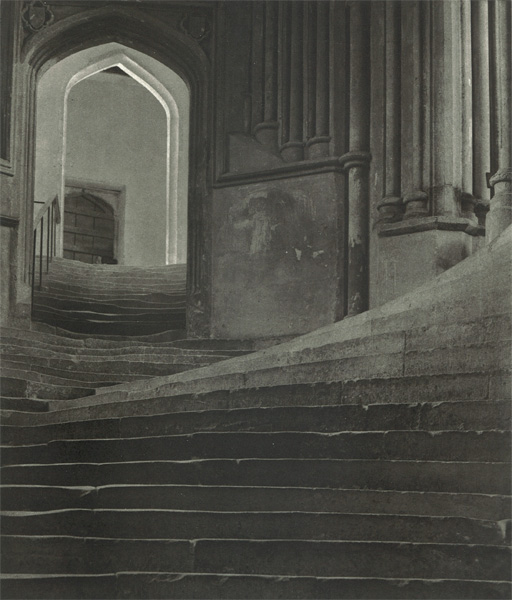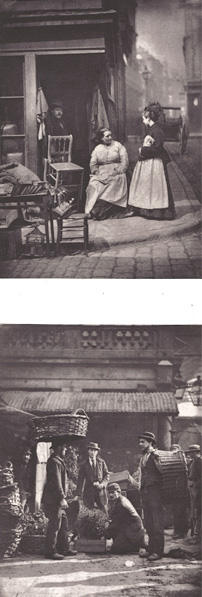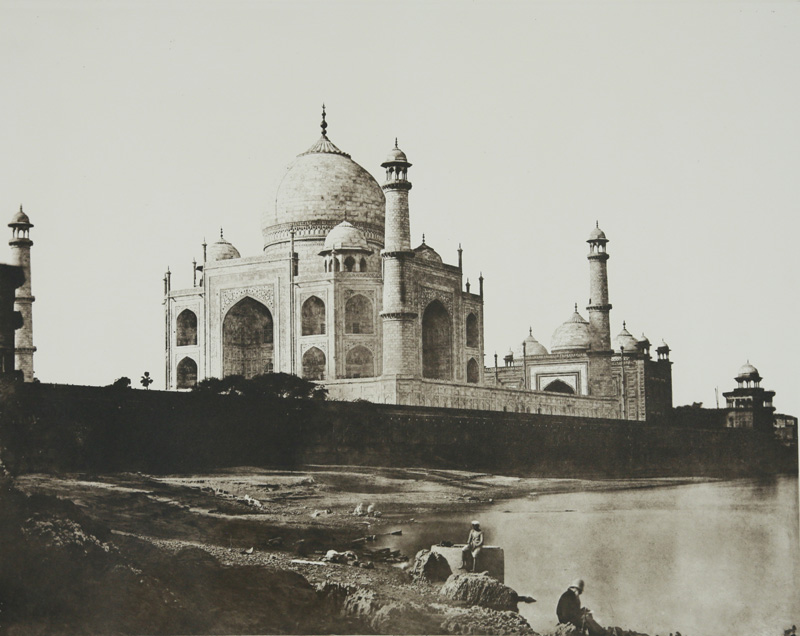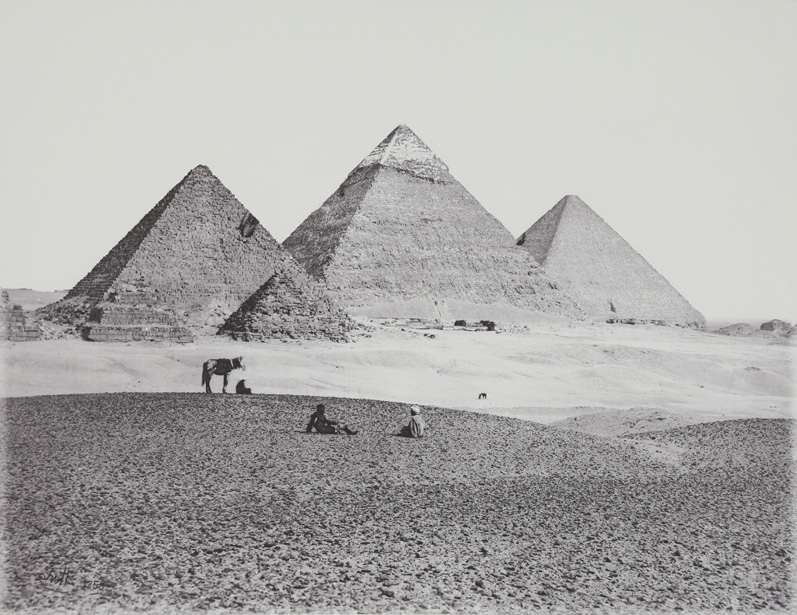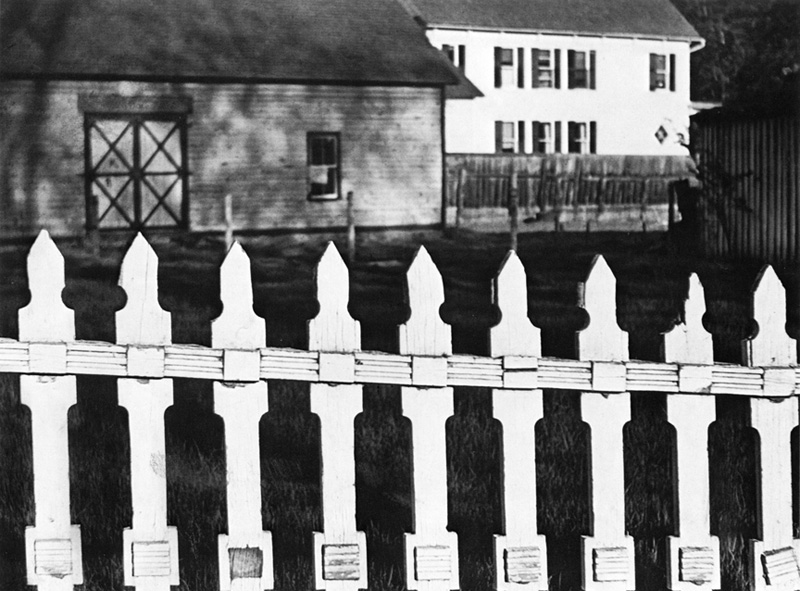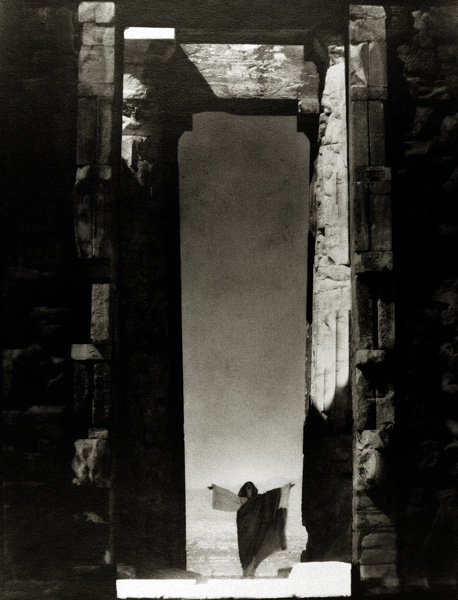The Golden Age of British Photography Portfolio
by Various Artists
$3,500.00
In stock
This portfolio contains sixteen hand-pulled dust-grain photogravures of rare masterpieces from Britain's greatest photographers, published in association with the Victoria and Albert Museum and the Philadelphia Museum of Art. It features important works by nineteenth-century masters of the medium, such as Julia Margaret Cameron, Frederick H. Evans, Lady Hawarden, David Octavius Hill and Robert Adamson, Oscar G. Rejlander, Henry Peach Robinson, William Henry Fox Talbot, and Benjamin Brecknell Turner. Wherever possible, the plates have been made from the photographer's original negatives, many of which were unavailable until the production of this portfolio. Each image is printed on 100 percent cotton rag, mold-made papers, with inks created especially for this project. The renderings have been accomplished in close collaboration with the Keeper of the Victoria and Albert Museum Collection, thus assuring fidelity to the original.
The portfolio is accompanied by an introductory text by Mark Haworth-Booth, Curator of Photographs at the Victoria and Albert Museum.
Portfolio of Sixteen Hand-Pulled Dust-Grain Photogravures by Various Photographers
Image Size: Varied (listed below)
Paper Size: 16 x 20 inches
Edition of 300 + 30 Artist Proofs
Prints included in this portfolio:
William Henry Fox Talbot, The Open Door, 1844
Image Size: 5 3/8 x 7 1/2 inches
David Octavius Hill & Robert Adamson, The Fairy Tree, 1845
Image Size: 8 1/4 x 6 inches
David Octavius Hill & Robert Adamson, Portrait of D. O. Hill, 1845
Image Size: 7 7/8 x 5 3/8 inches
Benjamin Brecknell Turner, Hedgerow at Clerkenleap, 1852-1854
Image Size: 7 7/8 x 5 3/8 inches
Francis Bedford, Holy Street Mill, Chagford, Devon, ca. 1855-1865
Image Size: 11 1/4 x 15 inches
Oscar G. Rejlander, Detail photograph for The Two Ways of Life, 1857
Image Size: 6 1/8 x 8 3/8 inches
Dr. John Murray, The Taj Mahal, Agra, India, ca. 1855
Image Size: 5 3/8 x 7 7/8 inches
Robert Howlett, Isambard Kingdom Brunel, 1857
Image Size: 13 3/8 x 16 3/4 inches
Franci Frith, The Great Pyramids at El Giza, 1858
Image Size: 11 1/8 x 9 inches
Henry Peach Robinson, The Shortest Way in Summertime, 1884
Image Size: 13 1/4 x 17 inches
Julia Margaret Cameron, Mrs. Herbert Duckworth, 1867
Image Size: 8 5/8 x 7 1/4 inches
Clementia, Lady Hawarden, Two Women on a Balcony, ca. 1864
Image Size: 11 x 14 inches
Thomas Annan, Gallowgate, Glasgow, 1868
Image Size: 13 1/2 x 10 1/4 inches
John Thomson, Old Furniture and Covent Garden Labourers, 1877-1878
Image Size: 11 x 9 1/4 inches
Frederick H. Evans, The Sea of Steps, 1903
Image Size: 8 5/8 x 7 1/2 inches
P.H. Emerson, The Old and the New, 1886
Image Size: 4 5/8 x 9 inches
William Henry Fox Talbot (b. 1800, Dorset; d. 1877, Lacock, England) was a scientist, inventory, natural historian, and photography pioneer. Between the sunny days of 1835 and January 1839, Talbot experimented with his salted paper print and calotype processes – precursors to the photographic processes of the late 19th and 20th centuries.
Clementia, Lady Hawarden (b. 1822, Dunbartonshire, Scotland; d. 1865, South Kensington, London, England) was an amateur portrait photographer of the Victorian era. She captured hundreds of images, mostly of her adolescent daughters.
David Octavius Hill (b. 1802, Perth; d. 1870, Edinburgh, Scotland) was a Scottish painter. Between 1843 and 1847, to pioneer aspects of photography in Scotland, he and Robert Adamson formed Hill & Adamson.
Robert Adamson (b. 1821; d. 1848, Saint Andrews, Scotland) was a Scottish chemist and photography pioneer at Hill & Adamson. Within five years after Hill hired him, Adamson produced around 2,500 calotypes, namely portraits, before he died in 1848.
Benjamin Brecknell Turner (b. 1815, London, England; d. 1894) was a founding member of the Photographic Society of London, formed in 1853. He based his photographs on Romanticism, a concurrent art movement.
Francis Bedford (b. 1815; d. 1894, London, England) was one of Britian’s most prominent landscape photographers, who was the first to accompany a royal tour.
Oscar G. Rejlander (b. 1813, Sweden; d. 1875, London, England), a photography pioneer and expert in photomontage, was interested in psychiatry and behavioral sciences. He collaborated with Charles Darwin on The Expression of the Emotions in Man and Animals (1872).
Dr. John Murray (b. 1809, Aberdeenshire, Scotland; d. 1898, Sheringham, England) was trained as a medical doctor. He was stationed near the Taj Mahal in Agra for forty years. During that time, he took an interest in the region’s architecture. Murray worked with a large-format wooden camera to record the buildings around Agra and the northern state of Uttar Pradesh.
Robert Howlett (b. 1831, Therberton; d. 1858, Campden Hill, London, England) captured portraits of Crimean War heroes, genre scenes, and landscapes. His work is widely collected and exhibited in major galleries.
Francis Frith (b. 1822, Chesterfield, England; d. 1898, Cannes, France) photographed the Middle East and various towns in the United Kingdom. In 1850, he opened a photography studio in Liverpool, known as Frith & Hayward.
Henry Peach Robinson (b. 1830, Ludlow; d. 1901, Royal Tunbridge Wells, England) was a pictorialist photographer. He is best known for pioneering the combination of negative or prints to form a single image – an early example of photomontage.
Julia Margaret Cameron (b. 1815, Kolkata, India; d. 1879, Kalutara, Sri Lanka) was a prominent British portrait photographer of the 19th century. Her photographs are intimate and soft-focused. Cameron captured images of famous Victorian men and illustrative images, depicting mythological, Christian, and literary characters.
Thomas Annan (b. 1829, Fife; b. 1887, Lenzie, Kirkintilloch, Scotland) was a Scottish photographer who was the first to document the horrible conditions in which the impoverished lived.
John Thomson (b. 1837, Edinburgh, Scotland; d. 1921, London, England) was a pioneering Scottish photographer and geographer. He was one of the first photographers to travel to the Far East, where he recorded lives and artifacts.
Frederick H. Evans (b. 1853; d. 1943, London, England) was a British photographer whose subject was architecture. He primarily photographed English and French cathedrals.
Peter Henry Emerson (b. 1856, Sagua La Grande, Cuba; d. 1936, Falmouth, United Kingdom) was a British writer and photographer. He was an early promoted of straight photography as an art form.










